Comments
No comments yet. You can be the first!
What did others read after this?
Content extract
Source: http://www.doksinet Fishing Locations in the Wairoa District 1.PUKENUI BEACH This beach is approximately 5 km long and has no vehicle access other than that at Mahunga. While the sand is hard enough most of the time for 2WD vehicles, it should be considered a 4WD beach for safety reasons. Snapper can be caught by fishing the shellfish beds at the southern end. Big kahawai and in recent years, trevally, inhabit this beach alongside some very big rays. Shellfish, sanma, pilchards and fresh kahawai are the best baits. 2. MAUNGAWHIO LAGOON This is a salt water lagoon, and a wade around at night with a good torch and a flounder spear will yield a good tasty breakfast. For those wishing to be more sporting about it, use a light line, small hooks and sweet corn for bait. Mix some of the corn with sand to act as berley. Find where the deeper channels are at low tide and fish these. 3.ORAKA BEACH The Maungawhio Lagoon joins the sea at Oraka Beach, and surfcasting and spinning will
catch the odd kahawai. Once again, on light tackle you can have quite a lot of fun for a while. The small bays and beaches along this area provide all types of fishing. You can do a bit of rock hopping if you like. Be careful though, as there are plenty of rocks and weed beds around to cause snag ups. There are many good spots for swimming and snorkelling as well as surfcasting. From mussels, paua and crayfish to blue cod, kahawai and snapper, this area caters for all tastes. At SNAPPER ROCK, about 750m past the cray boat wharf, you’ll come across a large flat area of grey rock. Fish in this area and with conditions right, you will find out why it earned its nickname. When the surface is wet it becomes very slippery so extreme caution should be exercised. Fish close to the rock as this is far more productive. As well as snapper, kahawai and kingfish can be taken. Kingfish size and numbers have increased in the last couple of years. Live baiting with mid-size kahawai is the most
productive method. The fish come in so close that a cast with a popper can do the trick too. Small boats can be launched in some of the channels. This is also a very good spot for those with diving gear. 4. THE CACTUS The road ends there, but driving along the beach is possible for some distance. There is good shore fishing along papa rock reefs and this is also a popular dive spot. Casting lures works, and some Source: http://www.doksinet very good snapper and kingfish have come from along here. 5.TABLE CAPE Marine charts show very deep water close in to Table Cape. If the wind conditions permit, kit fishing or live baits under a balloon should produce startling results. A good place to fish with 15kg plus line weights. 6. MAHIA The Mahia Peninsula offers good fishing in almost all conditions. The main advantage is that because of the structure of the peninsula, if conditions are bad on one side you need only go over to the other. Take the Wairoa to Gisborne section of SH2 and
turn off at Nuhaka. Northeast of Mahia are well-known rocks such as the “Cabbage Patch” and other pinnacles which fish well for tarakihi and hapuku. Ashworth Helicopters suggest flying fishermen to outer Portland Island for rock fishing, which would be excellent. Northeast of Portland Island is Bull Rock, a well-known hapuku stronghold. Table Cape, the outermost point on mainland Mahia, fishes well for snapper close in and at times large albacore and yellow fin out wide. 7.BULL ROCKS 10. OPOUTAMA BEACH This is easy to find as the rocks rise above the surface for30m. This is a popular dive and fishing spot, but be aware that there can be strong rips at times. A good spot for pelagic such as kingfish and kahawai, and has the reputation as a groper spot. Bottom species such as tarakihi, blue cod and snapper are also caught here. Rather shallow and sandy, this beach is an excellent spot for swimming. However, on the fishing side, a number of large tuatua beds dot the area. These
change position from time to time depending on winter and summer storms. Large rays and kahawai are the main inhabitants of the beach, but the occasional good size snapper is taken in the evenings. 8. DINAHS BEACH Drive down the Mahia East Coast Rd and turn off at Wainuiorangi Rd. This leads directly down to Dinah’s Beach where permission must be sought to pass through a gate. During October/Novembersome big sharks come very close to shore. A short wade and lob cast with half a kahawai or skippy bait is virtually certain to result in a big hook up. This is a spot for very heavy line classes and wire traces. 9.MAHIA BAY This is an ideal spot for a bit of jigging. The sea bed is quite clear of foul so just let the boat drift with the current. As with jigging anywhere, all sorts of fish will end up in the boat with you. At the southern end of Mahia Beach the launching area for the Mahia Game Fishing Club is located. The general public have use of the area as far as boat launching
goes as long as trailers and vehicles are parked in a civilised manner. As it is a gentle shelving beach, larger boats will need a tractor to save bogging down your rig. This ramp allows access to the western side of the peninsula for boat fishermen. 11. BLACKS BEACH When driving from Nuhaka, Blacks Beach is the first sighting of the sea before reaching Opoutama. A narrow winding road runs parallel to the beach and care is needed when choosing a parking spot. Snapper, kahawai, dogfish, trevally, cod, gurnard and the occasional moki are taken here. Source: http://www.doksinet 12. BLUCKS PIT ROAD Nine to ten kilometres north of Whakaki you’ll come to Blucks Pit Road. Well signposted, this road leads almost to the beach, a short walk being required to get to the water. The same dish species are caught here as at Whakiki. 13. WHAKAKI BEACH Immediately past the old Whakaki School can be found the turnoff to Whakaki Beach. The road off the highway is right on a blind bend so extreme
caution is necessary. There’s ample parking at the end of the short metal road. The best part about fishing Whakaki is that you can cast a line almost anywhere with a pretty good chance of success. It’s not uncommon for 10kg plus snapper to be caught as well as all sizes right down to school snapper.Whakaki fishes better when the water is a little rough but still clean. Small boats can be launched when the sea is calm. 14. WHAKAKI LAGOON About 20 km north of Wairoa, again on SH2, is located Whakaki Lagoon.When the lagoon is open to the sea, a crab or cray bait will catch you a large spotted dogfish or two. They are good scrappers and truly excellent eating if killed and filleted immediately after capture. 15.WAIROA Spin fishing in the river mouth will turn up a few kahawai.Like most rivers, the best time for this is when the fish gather to feed on whitebait asthey endeavour to make their upstream journey. From time to time kingfish will come to visit. This is not a bad sort of
snapper if you use cray,pilchards, skipjack or travelly for bait. During big runs of whitebait into the river, large snappergather out from the mouth. If you can scrounge some smelt from the whitebaiters, tie half a dozen or so onto your hook and cast well out. Large chrome spinners or rattle poppers are the way to go when the kingfish are about. 16. WAIHUA BEACH Approximately 22 km from Wairoa south on SH2 is located the smallWaihua settlement. The turnoff to Waihua Beach is well signposted and is only a short drive over a shingle road of approximately 1 km. The seabed in front of the car park is very rocky and swallows sinkers. A walk of 750m either way will take you clear of most of the foul ground and into good fishing. Snapper of all sizes are regular caught as well as kahawai, dogfish, trevally, gurnard and blue moki. As with all the beaches in this area, any sort of southerly wind or swell quickly rules out fishing off the beaches. 17. MOHAKA NORTH To reach Mohaka North the
turnoff is just before the bridge.Follow the road to the parking area A short walk takes you to the beach or to the northern side of the river mouth. The river mouth offers excellent spin fishing for kahawai, especially when the whitebait are about. The beach away from the mouth offers snapper, kahawai, dogfish, gurnard, trevally and at times those pesky paddle crabs. Most bait will do the trick. If the crabs are about, try a piece of squid or octopus and add a cork or float to your trace to try and keep it out of reach. 18. MOHAKA SOUTH Drive over the bridge and the road will take you to the southern side of the river. The last part of the road runs close to and parallel with the beach. The best part about this side of the river is that your vehicle remains in view while you are fishing. The same bait is used and the same fish found here as over on the northern side. A small word of warning here. Part of the way along, the road crosses a dry stream bed. It’s dry while the weather
is dry but if rain threatens, pack up smartly, for the stream very quickly becomes a torrent. You’ll be stuck there until the water goes down, and that could be days. During norwesterly winds, this is an excellent spot for kontiki or kite fishing. You need to get the baits out quickly passed the crab population. Source: http://www.doksinet 19. WAIKARE The WaikareCoast Road branches off SH2 at Putorino. About 12 km of metalled road takes you to a well-appointed car park area. Snapper of all size are caught with 9 kg plus being regular. The usual kahawai and gurnard are also taken, as well as large rays and at times sharks. Trevally and the occasional barracuda complete the picture. Best baits are shellfish, skipjack, whole pilchards and fresh kahawai. 20. LAKE TUTIRA Lake Tutira is about 80.5 km from WairoaSH2 runs alongside the lake. It is a great picnic spot and the water holds good numbers of trout. The access road runs along the edge of the water, so in most cases it’s but a
few paces and you’re fishing. Small boats are easily launched but motorsof all types are banned. It’s wind or muscle power only. Spin and fly fishing work equally well, and the lure or fly of course depends on the season and what natural food is available at the time. Good standbys however are Mrs. Simpson red setter and small Hamills Killer in fly and black and gold toby or purple Tasmanian devil for those using lures. 21. ARAPAOANUI The Arapaoanui Road is signposted at its intersection with SH2. The metalled winding road takes you to the beach in front of the Arapaoanui River. The beach in front of the river is sandy with a lot of sinker hungry rocks and weed. About one to two hundred metres south of the mouth is clear, and snapper, kahawai, rays, gurnard and the occasional dogfish are caught. Go north on the walkway and you’ll enjoy a mixture of beach and rock fishing. Stray lined whole pilchards work well off rocks and in channels, while shellfish on ledger rigs do the
trick on the beach sections. 22. WAIPATIKI Waipatiki now has a caravan/camping ground, so overnight fishing trips are a lot more comfortable. The beach is only a few hundred metres long and is steep, shelving sand. There are a couple of good easily spotted gutters running off the beach that are inhabited by snapper, gurnard, kahawai, trevally,blue moki and the odd barracouta.Because the rocks in the area hold good quantities of paua, mussels and other shellfish, this is the bait to use. The area between Waipatiki and Aropaoanui is a favourite haunt of the snorkel and wetsuit fraternity so if you’ve got yours, give it a go. As with all beaches in this section, easterly or southerly conditions make it too rough for fishing. A good rule of thumb is, if from Napier you can see waves on the horizon,stay home or go somewhere else. SOME ADVICE FOR FISHERMEN Dogfish is a name applied to a number of small sharks found in the northeast Atlantic, Pacific, and Mediterranean. The spiny dogfish
is the most common shark in the western Atlantic. It is a small, slender shark with flattened head and a snout that tapers to a blunt tip. It averages 075cm to 090cm in length with the largest growing to 120 cm or more. It hunts both alone and in groups with other dogfish. It eats small fish, squid, and crustaceans, and has extremely strong jaws for crushing shells, with low, flat grinding teeth like the smooth dogfish, but also possesses an extra set of small, very sharp teeth. Records show that they can live from 25 to 30 years. Care must be taken when handling dogfish due to the two venomous spines at the back of both dorsal fins. The venom is not likely to cause major damage, but the wound can take months to heal. Source: http://www.doksinet Bait Retailers: Mahia Avenue Store 24 Mahia Avenue Wairoa Tel: 06 838 8327 Nuhaka Stores State Highway 2 Nuhaka Tel: 06 837 8730 Wairoa Motorcycles Ltd Carroll Street Tel: 06 838 7454 or 06 838 6922 Cell: 0274 818 527 Fax: 06 838 7454 Deluxe
Ford Bridge Street Wairoa Tel: 06 838 8374 Fax: 06 838 8372 New World Queen Street Wairoa Tel: 06 838 8019 Write Price Foodbarn Paul Street Wairoa Tel: 06 838 8588 Riverview Dairy Marine Parade East Wairoa Tel: 06 838 6500 Shell Achilles Street Wairoa Tel: 06 838 7768 Gasoline Alley Cnr Paul &Lucknow Streets Wairoa Tel: 06 838 3042 Fishing Equipment: Wairoa Motorcycles Ltd Carroll Street Tel: 06 838 7454 or 06 838 6922 Cell: 0274 818 527 Fax: 06 838 7454 Estway Sports Marine Parade Wairoa Tel: 06 838 8677 Riverview Dairy Marine Parade East Wairoa Tel: 06 838 6500
catch the odd kahawai. Once again, on light tackle you can have quite a lot of fun for a while. The small bays and beaches along this area provide all types of fishing. You can do a bit of rock hopping if you like. Be careful though, as there are plenty of rocks and weed beds around to cause snag ups. There are many good spots for swimming and snorkelling as well as surfcasting. From mussels, paua and crayfish to blue cod, kahawai and snapper, this area caters for all tastes. At SNAPPER ROCK, about 750m past the cray boat wharf, you’ll come across a large flat area of grey rock. Fish in this area and with conditions right, you will find out why it earned its nickname. When the surface is wet it becomes very slippery so extreme caution should be exercised. Fish close to the rock as this is far more productive. As well as snapper, kahawai and kingfish can be taken. Kingfish size and numbers have increased in the last couple of years. Live baiting with mid-size kahawai is the most
productive method. The fish come in so close that a cast with a popper can do the trick too. Small boats can be launched in some of the channels. This is also a very good spot for those with diving gear. 4. THE CACTUS The road ends there, but driving along the beach is possible for some distance. There is good shore fishing along papa rock reefs and this is also a popular dive spot. Casting lures works, and some Source: http://www.doksinet very good snapper and kingfish have come from along here. 5.TABLE CAPE Marine charts show very deep water close in to Table Cape. If the wind conditions permit, kit fishing or live baits under a balloon should produce startling results. A good place to fish with 15kg plus line weights. 6. MAHIA The Mahia Peninsula offers good fishing in almost all conditions. The main advantage is that because of the structure of the peninsula, if conditions are bad on one side you need only go over to the other. Take the Wairoa to Gisborne section of SH2 and
turn off at Nuhaka. Northeast of Mahia are well-known rocks such as the “Cabbage Patch” and other pinnacles which fish well for tarakihi and hapuku. Ashworth Helicopters suggest flying fishermen to outer Portland Island for rock fishing, which would be excellent. Northeast of Portland Island is Bull Rock, a well-known hapuku stronghold. Table Cape, the outermost point on mainland Mahia, fishes well for snapper close in and at times large albacore and yellow fin out wide. 7.BULL ROCKS 10. OPOUTAMA BEACH This is easy to find as the rocks rise above the surface for30m. This is a popular dive and fishing spot, but be aware that there can be strong rips at times. A good spot for pelagic such as kingfish and kahawai, and has the reputation as a groper spot. Bottom species such as tarakihi, blue cod and snapper are also caught here. Rather shallow and sandy, this beach is an excellent spot for swimming. However, on the fishing side, a number of large tuatua beds dot the area. These
change position from time to time depending on winter and summer storms. Large rays and kahawai are the main inhabitants of the beach, but the occasional good size snapper is taken in the evenings. 8. DINAHS BEACH Drive down the Mahia East Coast Rd and turn off at Wainuiorangi Rd. This leads directly down to Dinah’s Beach where permission must be sought to pass through a gate. During October/Novembersome big sharks come very close to shore. A short wade and lob cast with half a kahawai or skippy bait is virtually certain to result in a big hook up. This is a spot for very heavy line classes and wire traces. 9.MAHIA BAY This is an ideal spot for a bit of jigging. The sea bed is quite clear of foul so just let the boat drift with the current. As with jigging anywhere, all sorts of fish will end up in the boat with you. At the southern end of Mahia Beach the launching area for the Mahia Game Fishing Club is located. The general public have use of the area as far as boat launching
goes as long as trailers and vehicles are parked in a civilised manner. As it is a gentle shelving beach, larger boats will need a tractor to save bogging down your rig. This ramp allows access to the western side of the peninsula for boat fishermen. 11. BLACKS BEACH When driving from Nuhaka, Blacks Beach is the first sighting of the sea before reaching Opoutama. A narrow winding road runs parallel to the beach and care is needed when choosing a parking spot. Snapper, kahawai, dogfish, trevally, cod, gurnard and the occasional moki are taken here. Source: http://www.doksinet 12. BLUCKS PIT ROAD Nine to ten kilometres north of Whakaki you’ll come to Blucks Pit Road. Well signposted, this road leads almost to the beach, a short walk being required to get to the water. The same dish species are caught here as at Whakiki. 13. WHAKAKI BEACH Immediately past the old Whakaki School can be found the turnoff to Whakaki Beach. The road off the highway is right on a blind bend so extreme
caution is necessary. There’s ample parking at the end of the short metal road. The best part about fishing Whakaki is that you can cast a line almost anywhere with a pretty good chance of success. It’s not uncommon for 10kg plus snapper to be caught as well as all sizes right down to school snapper.Whakaki fishes better when the water is a little rough but still clean. Small boats can be launched when the sea is calm. 14. WHAKAKI LAGOON About 20 km north of Wairoa, again on SH2, is located Whakaki Lagoon.When the lagoon is open to the sea, a crab or cray bait will catch you a large spotted dogfish or two. They are good scrappers and truly excellent eating if killed and filleted immediately after capture. 15.WAIROA Spin fishing in the river mouth will turn up a few kahawai.Like most rivers, the best time for this is when the fish gather to feed on whitebait asthey endeavour to make their upstream journey. From time to time kingfish will come to visit. This is not a bad sort of
snapper if you use cray,pilchards, skipjack or travelly for bait. During big runs of whitebait into the river, large snappergather out from the mouth. If you can scrounge some smelt from the whitebaiters, tie half a dozen or so onto your hook and cast well out. Large chrome spinners or rattle poppers are the way to go when the kingfish are about. 16. WAIHUA BEACH Approximately 22 km from Wairoa south on SH2 is located the smallWaihua settlement. The turnoff to Waihua Beach is well signposted and is only a short drive over a shingle road of approximately 1 km. The seabed in front of the car park is very rocky and swallows sinkers. A walk of 750m either way will take you clear of most of the foul ground and into good fishing. Snapper of all sizes are regular caught as well as kahawai, dogfish, trevally, gurnard and blue moki. As with all the beaches in this area, any sort of southerly wind or swell quickly rules out fishing off the beaches. 17. MOHAKA NORTH To reach Mohaka North the
turnoff is just before the bridge.Follow the road to the parking area A short walk takes you to the beach or to the northern side of the river mouth. The river mouth offers excellent spin fishing for kahawai, especially when the whitebait are about. The beach away from the mouth offers snapper, kahawai, dogfish, gurnard, trevally and at times those pesky paddle crabs. Most bait will do the trick. If the crabs are about, try a piece of squid or octopus and add a cork or float to your trace to try and keep it out of reach. 18. MOHAKA SOUTH Drive over the bridge and the road will take you to the southern side of the river. The last part of the road runs close to and parallel with the beach. The best part about this side of the river is that your vehicle remains in view while you are fishing. The same bait is used and the same fish found here as over on the northern side. A small word of warning here. Part of the way along, the road crosses a dry stream bed. It’s dry while the weather
is dry but if rain threatens, pack up smartly, for the stream very quickly becomes a torrent. You’ll be stuck there until the water goes down, and that could be days. During norwesterly winds, this is an excellent spot for kontiki or kite fishing. You need to get the baits out quickly passed the crab population. Source: http://www.doksinet 19. WAIKARE The WaikareCoast Road branches off SH2 at Putorino. About 12 km of metalled road takes you to a well-appointed car park area. Snapper of all size are caught with 9 kg plus being regular. The usual kahawai and gurnard are also taken, as well as large rays and at times sharks. Trevally and the occasional barracuda complete the picture. Best baits are shellfish, skipjack, whole pilchards and fresh kahawai. 20. LAKE TUTIRA Lake Tutira is about 80.5 km from WairoaSH2 runs alongside the lake. It is a great picnic spot and the water holds good numbers of trout. The access road runs along the edge of the water, so in most cases it’s but a
few paces and you’re fishing. Small boats are easily launched but motorsof all types are banned. It’s wind or muscle power only. Spin and fly fishing work equally well, and the lure or fly of course depends on the season and what natural food is available at the time. Good standbys however are Mrs. Simpson red setter and small Hamills Killer in fly and black and gold toby or purple Tasmanian devil for those using lures. 21. ARAPAOANUI The Arapaoanui Road is signposted at its intersection with SH2. The metalled winding road takes you to the beach in front of the Arapaoanui River. The beach in front of the river is sandy with a lot of sinker hungry rocks and weed. About one to two hundred metres south of the mouth is clear, and snapper, kahawai, rays, gurnard and the occasional dogfish are caught. Go north on the walkway and you’ll enjoy a mixture of beach and rock fishing. Stray lined whole pilchards work well off rocks and in channels, while shellfish on ledger rigs do the
trick on the beach sections. 22. WAIPATIKI Waipatiki now has a caravan/camping ground, so overnight fishing trips are a lot more comfortable. The beach is only a few hundred metres long and is steep, shelving sand. There are a couple of good easily spotted gutters running off the beach that are inhabited by snapper, gurnard, kahawai, trevally,blue moki and the odd barracouta.Because the rocks in the area hold good quantities of paua, mussels and other shellfish, this is the bait to use. The area between Waipatiki and Aropaoanui is a favourite haunt of the snorkel and wetsuit fraternity so if you’ve got yours, give it a go. As with all beaches in this section, easterly or southerly conditions make it too rough for fishing. A good rule of thumb is, if from Napier you can see waves on the horizon,stay home or go somewhere else. SOME ADVICE FOR FISHERMEN Dogfish is a name applied to a number of small sharks found in the northeast Atlantic, Pacific, and Mediterranean. The spiny dogfish
is the most common shark in the western Atlantic. It is a small, slender shark with flattened head and a snout that tapers to a blunt tip. It averages 075cm to 090cm in length with the largest growing to 120 cm or more. It hunts both alone and in groups with other dogfish. It eats small fish, squid, and crustaceans, and has extremely strong jaws for crushing shells, with low, flat grinding teeth like the smooth dogfish, but also possesses an extra set of small, very sharp teeth. Records show that they can live from 25 to 30 years. Care must be taken when handling dogfish due to the two venomous spines at the back of both dorsal fins. The venom is not likely to cause major damage, but the wound can take months to heal. Source: http://www.doksinet Bait Retailers: Mahia Avenue Store 24 Mahia Avenue Wairoa Tel: 06 838 8327 Nuhaka Stores State Highway 2 Nuhaka Tel: 06 837 8730 Wairoa Motorcycles Ltd Carroll Street Tel: 06 838 7454 or 06 838 6922 Cell: 0274 818 527 Fax: 06 838 7454 Deluxe
Ford Bridge Street Wairoa Tel: 06 838 8374 Fax: 06 838 8372 New World Queen Street Wairoa Tel: 06 838 8019 Write Price Foodbarn Paul Street Wairoa Tel: 06 838 8588 Riverview Dairy Marine Parade East Wairoa Tel: 06 838 6500 Shell Achilles Street Wairoa Tel: 06 838 7768 Gasoline Alley Cnr Paul &Lucknow Streets Wairoa Tel: 06 838 3042 Fishing Equipment: Wairoa Motorcycles Ltd Carroll Street Tel: 06 838 7454 or 06 838 6922 Cell: 0274 818 527 Fax: 06 838 7454 Estway Sports Marine Parade Wairoa Tel: 06 838 8677 Riverview Dairy Marine Parade East Wairoa Tel: 06 838 6500
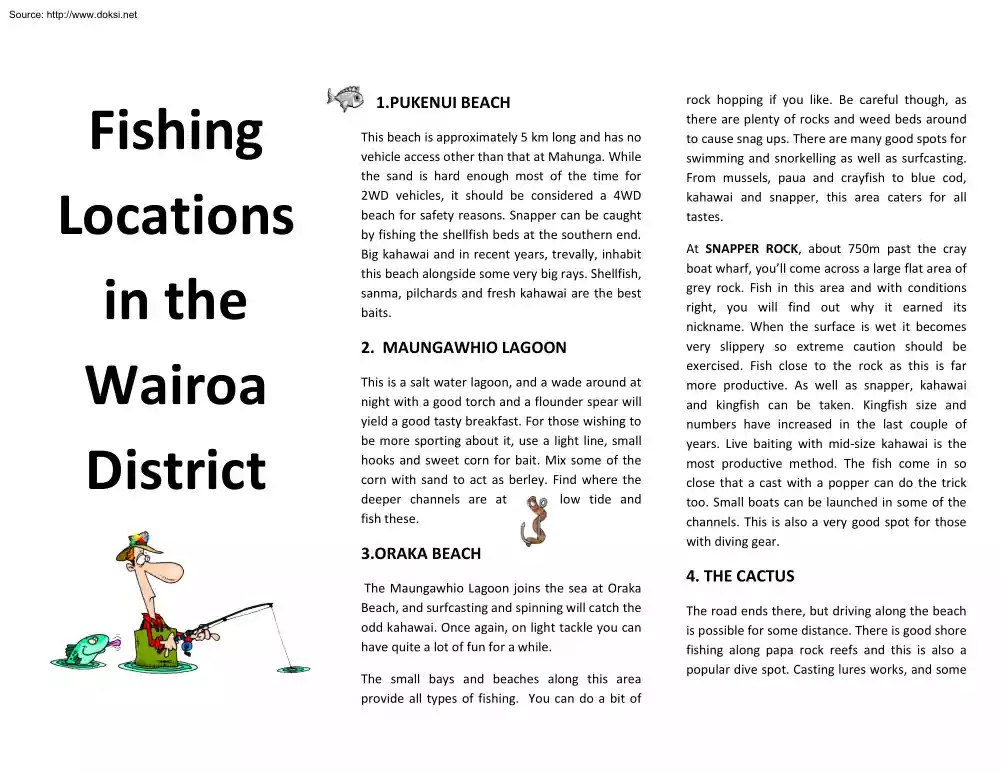
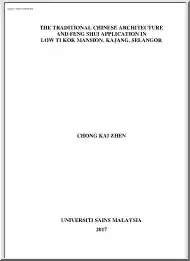
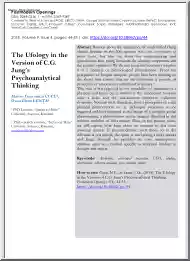
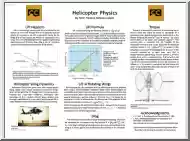
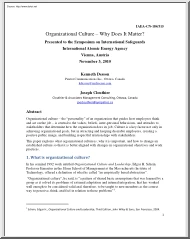
 Just like you draw up a plan when you’re going to war, building a house, or even going on vacation, you need to draw up a plan for your business. This tutorial will help you to clearly see where you are and make it possible to understand where you’re going.
Just like you draw up a plan when you’re going to war, building a house, or even going on vacation, you need to draw up a plan for your business. This tutorial will help you to clearly see where you are and make it possible to understand where you’re going.